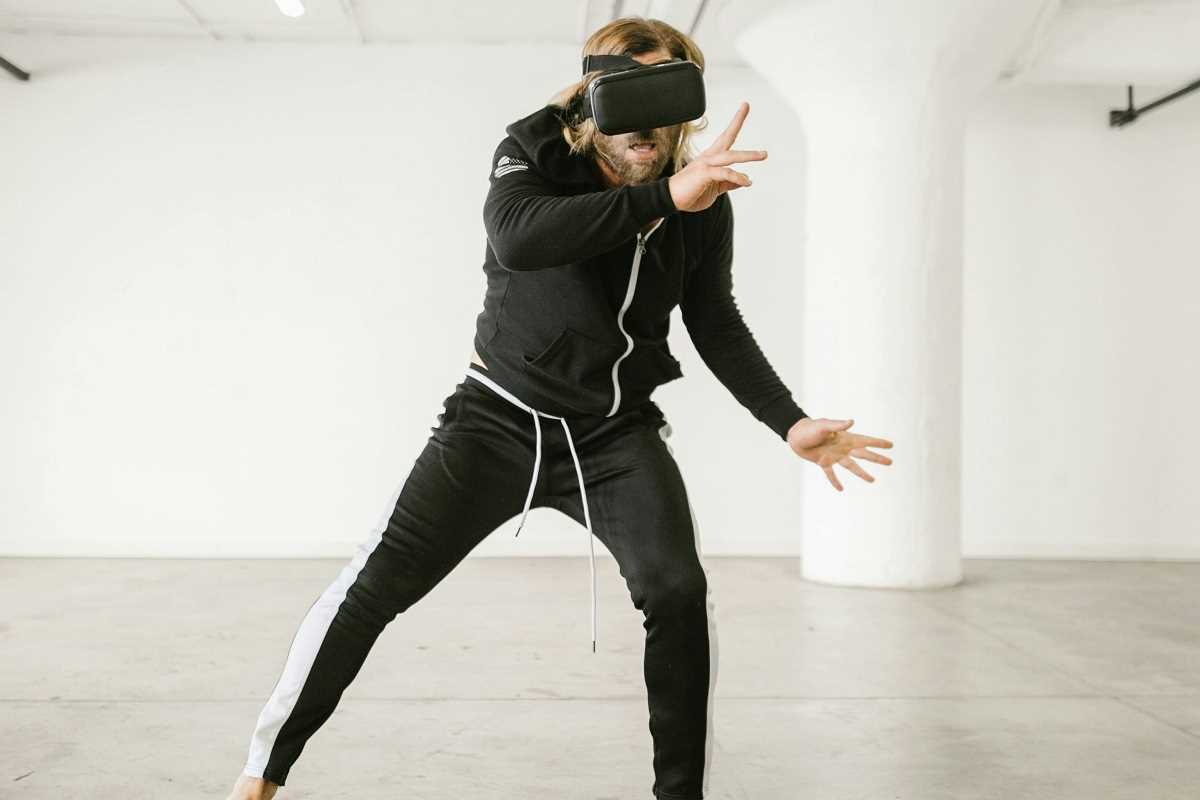Look, bros, I'm not gonna sugarcoat this, if you're still training without a fitness wearable in 2025, you're essentially flying blind. It's like trying to trade stocks without real-time data. Absolutely insane behavior. The fitness wearable market has gone completely vertical, showing the kind of explosive growth that makes venture capitalists weak at the knees. We're talking about devices that have transformed from simple step counters to comprehensive health monitoring systems with better analytics than most hedge funds.
The competitive advantage these devices offer is measurable and significant. You're looking at optimization of sleep cycles, recovery metrics, training load calculations, all the data points that separate the alphas from the pack. The most sophisticated wearables on the market are essentially strapping a medical lab to your wrist, giving you the kind of biometric insights that professional athletes were paying tens of thousands for just a few years ago.
For the discerning consumer looking to maximize their physical performance, the question isn't whether to invest in a fitness wearable, it's which one delivers the highest return on investment for their specific needs. The diversification of the market means there's now a specialized tool for every use case, from hardcore ultramarathoners to weekend warriors looking to lose the dad bod. Let me walk you through the absolute killers in this space that are crushing it in 2025.
Apple Watch Ultra 3
Apple's dominance in the premium wearable space continues unabated with the Watch Ultra 3, which has quickly become the Rolex of fitness trackers. With its titanium case and sapphire crystal display, this thing is built like a tank but looks appropriate whether you're crushing a triathlon or crushing a board meeting. The Ultra 3 represents the kind of vertical integration that makes Apple's stock price defy gravity year after year.
The battery life has finally been addressed, with the Ultra 3 delivering up to 96 hours in low-power mode, a game-changer for endurance athletes and those who don't want another device to charge every night. This is the kind of product improvement that comes from listening to your core users, something Apple has historically excelled at. Marathon runners no longer need to carry a portable charger for races, which is the kind of quality-of-life upgrade that justifies the premium pricing strategy.
The Ultra 3's built-in Dual-Frequency GPS is accurate enough to replace dedicated sports watches, with precision mapping that works even in dense urban environments or under heavy tree cover. For outdoor enthusiasts, this means one less device to manage and charge. The market has responded accordingly, with companies like Garmin feeling the pressure and scrambling to differentiate their offerings, a classic case of a category leader forcing competitors to pivot or perish.
Whoop 6.0
Whoop has maintained its position as the recovery specialist with the release of the 6.0, which continues to focus on the optimization of training and rest cycles with an almost obsessive attention to detail. This subscription-based model has been absolutely printing money for investors, with recurring revenue that would make SaaS companies jealous. The lack of a screen might seem counterintuitive, but it's actually a brilliant strategic decision that allows for phenomenal battery life and laser-focused functionality.
The 6.0's new sensors capture data at twice the sampling rate of the previous generation, providing granular insights that can detect even subtle changes in recovery status. This is particularly valuable for high-performance individuals, whether athletes or executives, who operate at the margins where small optimizations compound into significant competitive advantages over time. The strain-to-recovery ratio calculations have been refined to account for mental stress as well, acknowledging that cognitive demands can be just as taxing as physical ones.
The minimalist design of the Whoop 6.0 allows it to be worn alongside traditional watches or other accessories without looking redundant or gaudy. It's the perfect stealth wealth tech accessory, signaling membership in a club of performance-obsessed individuals without screaming for attention. This understated approach has proved particularly appealing to C-suite executives and high-net-worth individuals who value substance over flash.
Garmin Fenix 9
The Garmin Fenix 9 continues to be the preferred choice for serious endurance athletes who demand reliability above all else. This is the Brooks Brothers suit of fitness watches, not the flashiest option, but one that never lets you down when it matters. The build quality is unimpeachable, with a rugged construction that can withstand conditions that would destroy lesser devices. It's the kind of fundamental quality that creates rabidly loyal customers who wouldn't dream of switching platforms.
- Solar charging capabilities that extend battery life to 30+ days in smartwatch mode
- Topographical maps with turn-by-turn navigation for trail runners and hikers
- Advanced training metrics including VO2 max estimates adjusted for heat and altitude
- Multi-band GPS for accuracy within 1 meter even in challenging environments
- Real-time stamina feature that predicts how much energy you have left during activities
Garmin's approach to data is comprehensive without being overwhelming, striking the perfect balance between depth and usability. The Fenix 9 provides actionable insights rather than drowning users in numbers, a distinction that separates truly valuable analytics from mere data collection. Their training load focus metric helps users understand whether they're maintaining, peaking, or overreaching in their fitness regimen, essentially providing the kind of performance management that used to require a personal coach.
Oura Ring Gen 4
The Oura Ring Gen 4 has carved out a unique position in the market by disguising powerful health monitoring technology as a stylish piece of jewelry. This form factor innovation has opened up the wearable market to demographics that would never consider a traditional smartwatch or fitness band. It's the perfect example of how design thinking can create new market segments and capture previously untapped consumer spending.
The Gen 4's sensor array has been completely redesigned, incorporating multi-wavelength photoplethysmography and temperature sensors that provide insights into everything from heart rate variability to reproductive health cycles. Despite its diminutive size, this ring packs more advanced sensors than devices ten times its volume from just a few years ago. The miniaturization represents the kind of engineering excellence that creates sustainable competitive advantages.
The subscription model has been refined to include more personalized insights and recommendations based on longitudinal data analysis. This recurring revenue stream has completely transformed Oura's business model, creating predictable cash flow that has attracted significant institutional investment. The company has effectively transitioned from a hardware manufacturer to a health services provider, with the corresponding increase in valuation multiples that such transitions typically command.
Fitbit Sense 3
Don't sleep on the Fitbit Sense 3, which represents incredible value proposition despite Google's acquisition of the brand. This device delivers 80% of the functionality of premium competitors at 50% of the price, the kind of asymmetric risk-reward profile that smart money looks for. The Sense 3 maintains Fitbit's intuitive user experience while incorporating Google's AI capabilities, creating a potent combination of accessibility and sophisticated analysis.
The stress management features set this device apart, with electrodermal activity sensors that can detect physiological signs of stress before you're consciously aware of them. This early warning system allows for proactive interventions like guided breathing sessions or schedule adjustments to prevent the cumulative damage that chronic stress inflicts. It's like having a circuit breaker for your autonomic nervous system, preventing the kind of psychological burnout that sidelines too many high performers.
Google's health algorithms have dramatically improved the sleep tracking capabilities, with detailed breakdowns of sleep stages and a smart alarm feature that wakes you during light sleep to minimize grogginess. The platform then correlates your sleep quality with various lifestyle factors to help identify which specific behaviors are helping or hurting your rest. This kind of cause-and-effect analysis transforms raw data into actionable intelligence that can drive meaningful behavior change.
The battery life exceeds a week with moderate use, eliminating the daily charging ritual that plagues many smartwatches. This seemingly small convenience factor actually drives significantly higher user retention rates, as the reduced friction means people actually wear the device consistently enough to benefit from the longitudinal data analysis. It's a perfect example of how addressing pain points can be more valuable than adding flashy new features.
The Fitbit app remains one of the most user-friendly in the space, with an interface that makes complex health data accessible without oversimplification. The social features create community engagement and friendly competition that drives higher activity levels across the user base. This network effect creates a moat around the platform that competitors struggle to overcome, even those with technically superior hardware offerings.
 (Image via
(Image via





